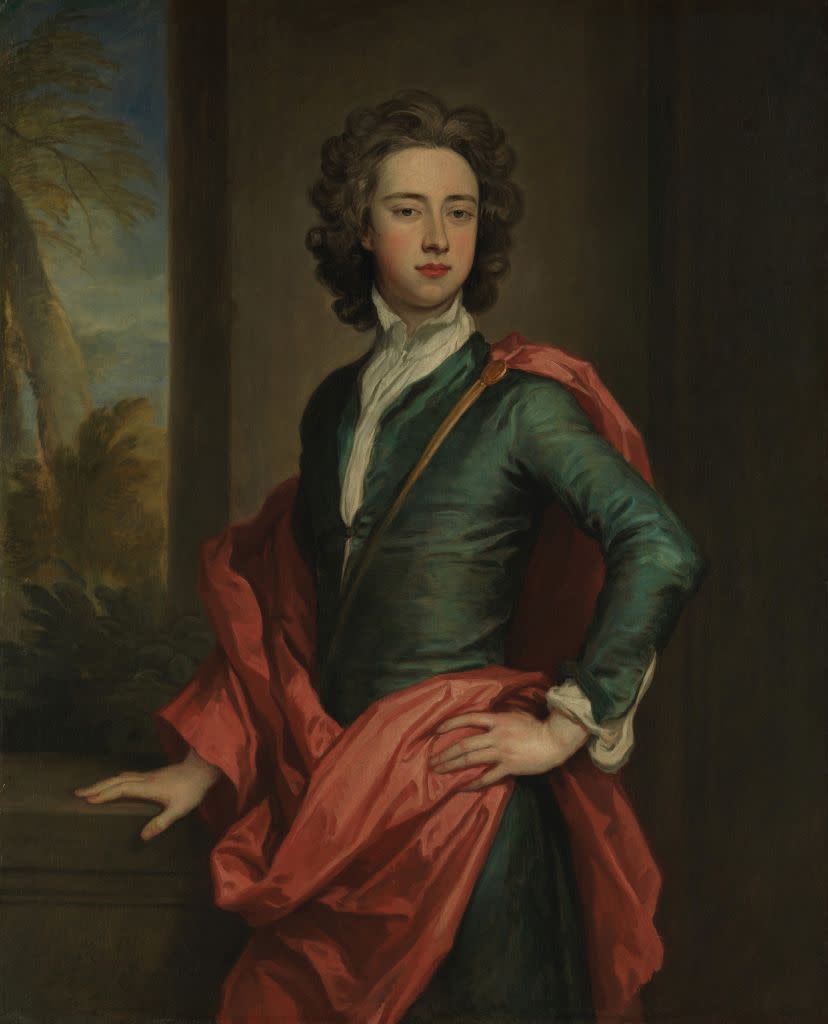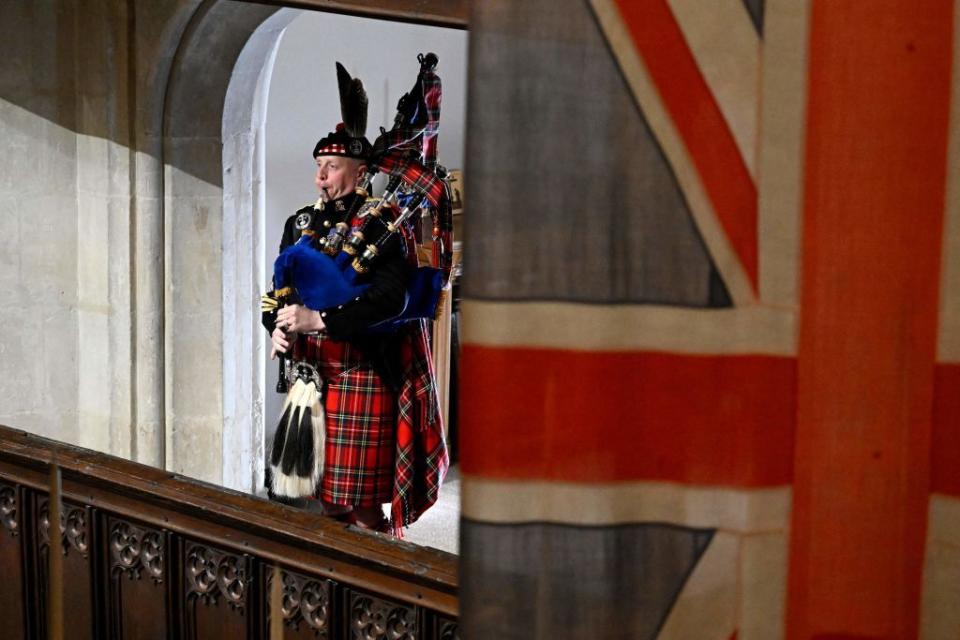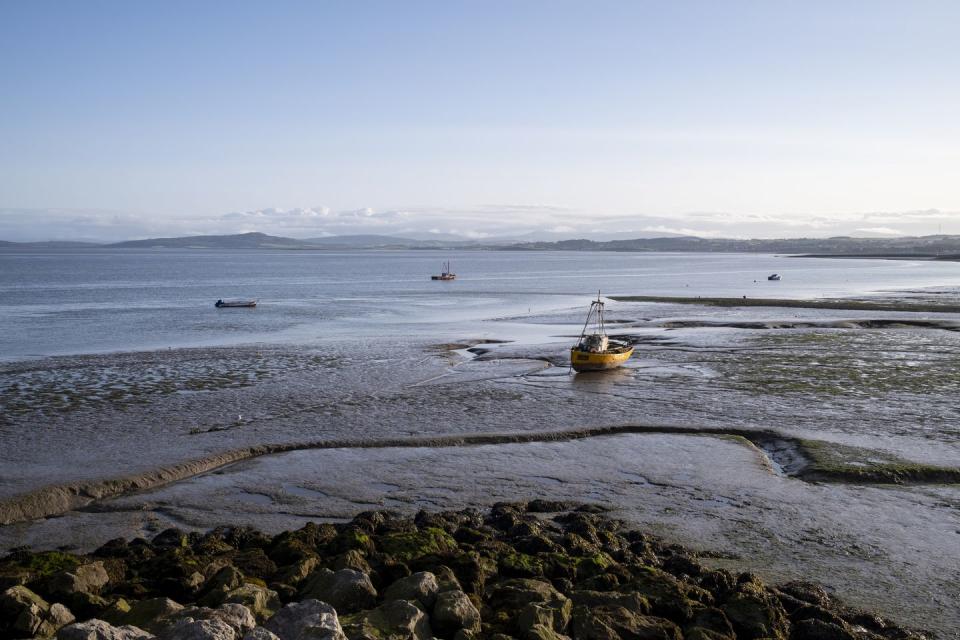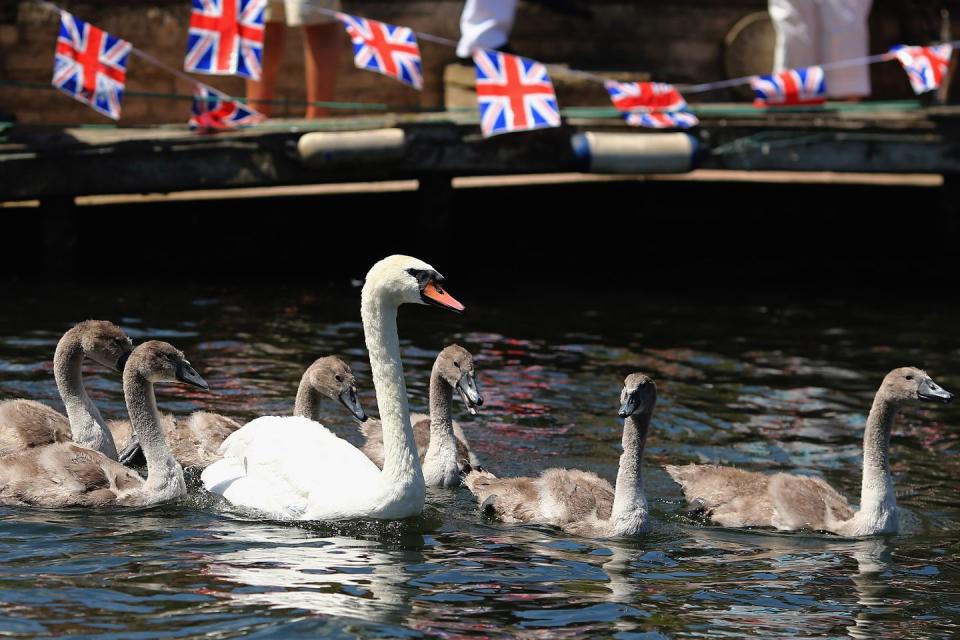Is There Really a Warden of The Swans and a Royal Herb Strewer?
- Oops!Something went wrong.Please try again later.
- Oops!Something went wrong.Please try again later.
"Hearst Magazines and Yahoo may earn commission or revenue on some items through these links."
If the coronation of King Charles reminded us of one thing it is that the traditions and rituals surrounding the British monarchy are still very much alive. However, even the keenest royal-watchers may have found themselves baffled during the latest episodes of The Crown at the mention of certain traditional royal roles including titles such as the Queen’s Herb Strewer and the Queen’s Guide to the Sands.
Season six references “ceremonial offices” after Prime Minster Tony Blair confronts the Queen over whether she should consider a “purge of honorifics” as a “useful concession and PR victory.” A list of people with bewildering titles are brought before her as the Queen (played by Imelda Staunton) embarks on a review to see whether she can indeed let any of them go. In the end, she refuses, describing them as holding “an extraordinary array of precious expertise.”
However, the scenes may have left many wondering whether or not these roles do actually exist. It will surprise no-one to hear that once again The Crown has mixed fact with fiction, but many of the positions do still exist today. We take a look at what is real and what is not.
Hereditary Grand Falconer

The first mention of an unusual royal role in series six goes to the Hereditary Grand Falconer, who Imelda Staunton refers to as “Dear Murray, what about him?” Today, and at the time the scene was set, a real man called Murray Beauclerk is the 14th Duke of St Albans—a title which comes with the position of Grand Falconer. The hereditary role was created in 1684 by Charles II for Murray’s ancestor Charles Beauclerk, who was the son of Charles II with his mistress Nell Gwyn. Yet, while the title still exists, it appears not to involve any responsibilities involving falcons, or indeed any responsibilities at all.
The Queen’s Herb Strewer
The Crown has used its artistic liscense here as this role has not existed for around 200 years. The Herb Strewer was first documented in 1660 following the restoration of King Charles II and was believed to involve strewing flowers throughout royal residences for special aromas. The Royal Collection Trust notes that the role was performed at the coronation of King George IV in 1821 by Anne Fellowes and other ladies. However, it has not been performed at a coronation since. In light of her familial connection, Julian Fellowes’s niece Jessica Fellowes applied to be a royal herb strewer at King Charles’s coronation, but the decision was made not to revive the tradition.
Piper to the Sovereign

One of the more recognizable positions, thanks largely to the prominent role he played at the Queen’s funeral, this position is real and still very much exists. Pipe Major Paul Burns played the Gaelic lullaby "Sleep, dearie, sleep" (which the final episode of The Crown is named after) at Queen Elizabeth’s September 2022 funeral service. He is now piper to King Charles.
The Queen’s Guide to the Sands

This position is also real (and is now the King’s guide) although today it has very little practically to do with the monarch. The current holder is Michael Wilson who took over in 2019. The role involves guiding people over the tidal waters of Morecambe Bay estuary in northwestern England and dates back to the 16th century. The Duchy of Lancaster, which is a land portfolio held by the sovereign, used to appoint the guide but now the decision falls to organization Guide over Sands Trust.
Warden of the Swans

Another real office, this one remains very much part of the royal household. It was created in 1993 when one post—the Keeper of the Swans—was divided into two roles. Those were the Warden of the Swans, which is held by Christopher Perrins, and Marker of the Swans, which is held by David Barber. The royal household highlights that that “The Crown continues to have the right to claim ownership of all unmarked mute swans swimming in open waters throughout the country from as far back as the twelfth century.” The annual Swan Upping ceremony, where swans on the Thames are rounded up, counted and checked on, continues to be a popular event in the royal calendar.
Yeoman of the Glass and China Pantry

Yep, this one is also real. The man who held the position in 2017 (and may still do so today), Stephen Marshall, was awarded the Royal Victorian Medal by Queen Elizabeth in December 2017. One key responsibility is folding napkins into Dutch bonnet shapes for state banquets. There is also a Yeoman of the Silver Pantry who takes care of the spectacular Grand Service which is also used for state banquets.
The Washer of the Sovereign’s Hands
This position definitely existed during the period that The Crown is set, although the current post-holder has very much flown under the radar. The role was held by Peter Houison Craufurd until his death in 2012 and it was a position he had inherited from his ancestors.
“We used to have to write to Buckingham Palace to offer to wash the monarch’s hands every time they were in residence at the Palace of Holyroodhouse,” Houison Craufurd once told the Daily Telegraph about the responsibility. “More recently, we have been told by the Queen’s office that, as we have already washed her hands once, that is all she requires us to do. So now we have to wait until Prince Charles takes the throne before we do it again.”
The role is thought to have been inherited by his son Simon, who is the 29th Laird of Crafurdland Castle in Ayrshire, Scotland. However, if Simon has been called on to perform the role since King Charles came to the throne it has gone undocumented.
Yeoman Bed Hanger
It sounds completely bizarre, so obviously this one is real. Another ancient position, the Yeoman Bed Hanger was created as part of the Body Guard of the Yeomen of the Guard by King Henry VII in 1485.
“During King Henry’s reign the Body Guard was responsible for guarding The King and his Consort twenty-four hours a day,” Westminster Abbey noted about the role’s history in a program for a 2009 service. “The duties included helping at the making of The King’s bed by the Yeomen Bed Goers, and looking after the bed and bedding by the Yeomen Bed Hangers.” Today the post-holders, who are former servicemen and women, have a purely ceremonial role in royal events. However, the ranks with their traditional titles, which includes Yeomen Bed Hanger and Yeomen Bed Goer, still exist.
You Might Also Like

